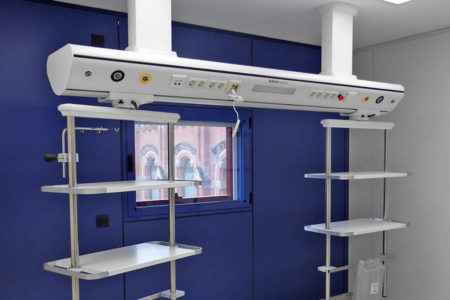Safe and energy-efficient operating rooms
Controlling lighting, temperature and humidity in the operating room is essential for a successful and safe surgical procedure.
The importance of lighting, temperature and humidity in the OR: how it affects the accuracy and safety of operations
In any surgical procedure in an operating room, precision and safety come into play as determining factors for its success.
In addition to the skill of the surgeon, the medical staff and the quality of the medical equipment used, the importance of factors such as lighting, temperature and humidity must also be considered. Therefore, we will explore the impact of these aspects and how they affect the accuracy and safety of surgical procedures.
Lighting in the operating room
Having adequate lighting in the operating room is essential to provide optimal visibility during surgeries. Good lighting allows the surgeon to clearly visualize the surgical field, identify important anatomical structures and perform precise movements.
This lighting must be uniform, free of shadows and adjustable according to the needs of the procedure.
The improvement in this infrastructure, focusing on the most innovative medical lighting equipment and the latest generation surgical lights, helps to leave behind possible problems and errors due to lack of illumination, so as not to compromise the precision of the intervention and jeopardize patient safety.

Temperature and humidity control in the operating room
Temperature control in the operating room is another elementary factor, since it affects both the medical team and the patient.
On the one hand, an operating room that is too cold can cause discomfort and make it difficult for the staff to concentrate. On the other hand, if it is too hot, it can cause fatigue, excessive sweating and discomfort for the medical staff. At the same time, an inadequate temperature influences the patient’s body temperature, and this can have adverse consequences for the patient’s recovery.
Along with temperature, humidity is also vital in the prevention of infection and the quality of air in the surgical environment. Thus, inadequate humidity can lead to the proliferation of bacteria and other pathogens, increasing the risk of postoperative infections, hindering the integrity of the materials used during surgery (gloves, masks, etc.).

Good air quality for patient recovery
Finally, air quality, which is essential for patient recovery, is also a crucial factor in the operating room.
The aim is to achieve a healthy, contaminant-free environment to prevent infection, promote proper wound healing and, ultimately, ensure patient safety.
Therefore, to achieve optimal air quality, operating rooms usually have modern hospital equipment with highly efficient air filtration systems. In addition, healthcare personnel must follow strict hygiene protocols to minimize the release of particles and microorganisms into the air.
Practical tips for maintaining an optimal operating room environment
There are some recommendations that every medical centre can follow to achieve an optimal environment in the operating room. These include the following:
- Use modern, adjustable surgical lighting systems to provide bright, uniform illumination in the OR, and ensure that the colour temperature of the lights is appropriate (usually around 4,500 Kelvin).
- Adjust the temperature according to the needs of the procedure and the preferences of the medical staff, and monitor it regularly.
- Use humidity control systems to maintain appropriate levels according to established guidelines, or use humidification or dehumidification devices as needed.
- Employ high-efficiency air filtration systems to remove airborne particles and microorganisms, and maintain positive pressure to prevent unfiltered air from entering from surrounding areas.

Conclusions
Lighting, temperature, humidity, and air quality in the operating room cannot be underestimated.
All these factors play a determining role in the precision and safety of surgical procedures.
“From Tedisel Medical we want to remind the importance of maintaining an optimal environment in the operating room to improve the quality and safety of medical care.”









